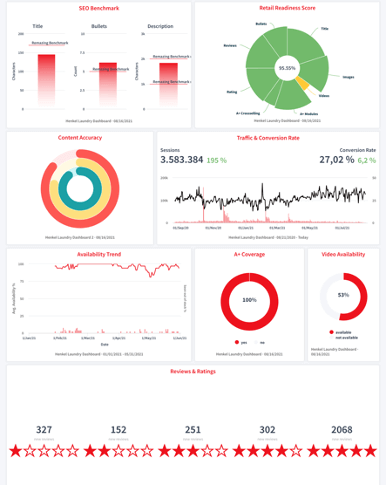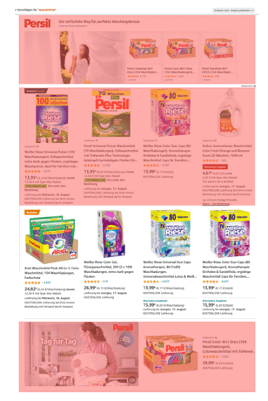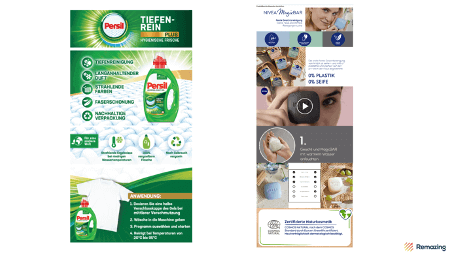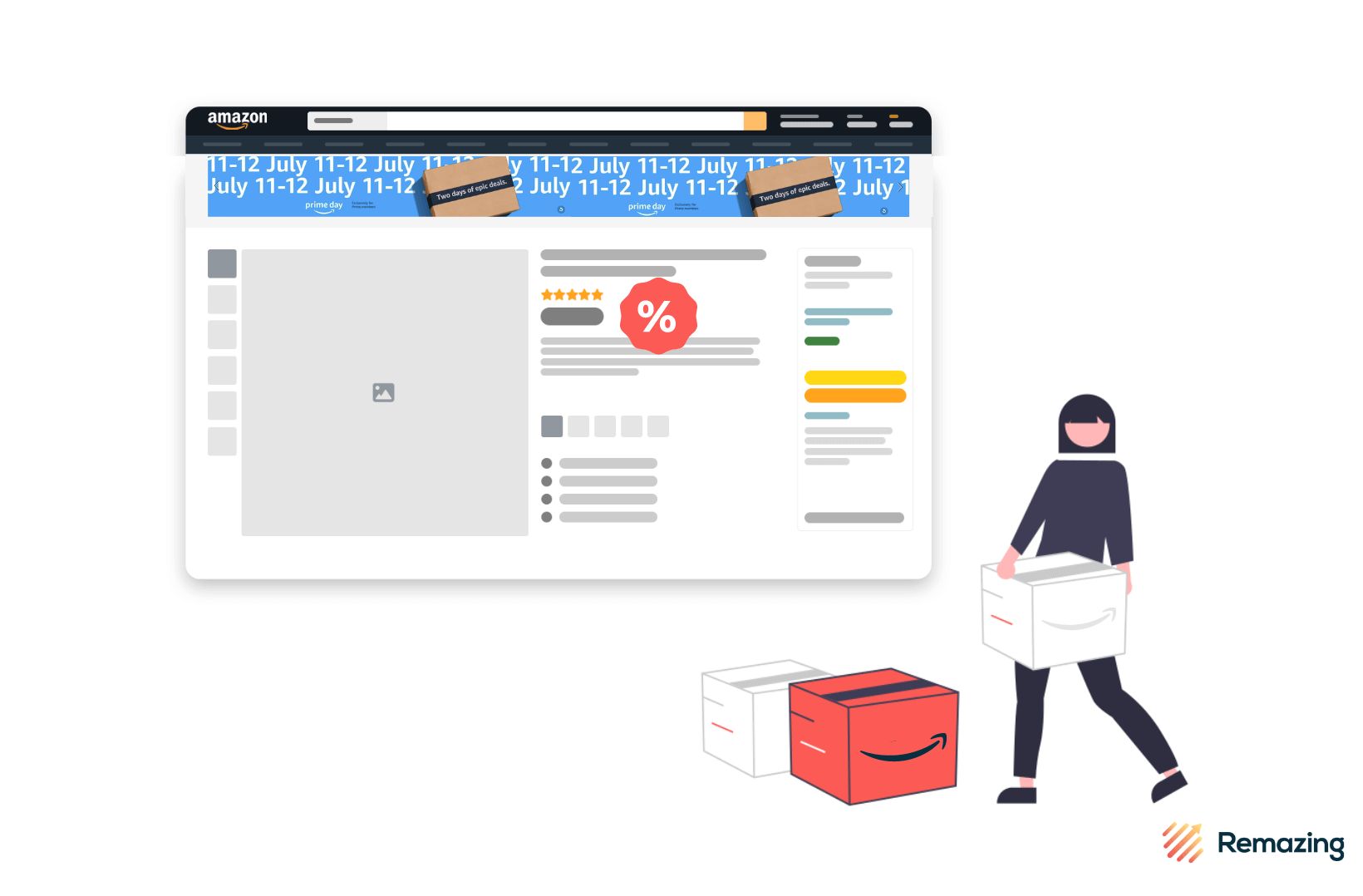
The “new” Amazon Algorithm: A9 vs. “A10”

Selling on Amazon means working with its algorithm – understanding what information it needs and then transforming that into a high ranking. With updates to the Amazon algorithm, the requirements for this input are changing.
First things first: there was no “official” update of the Amazon algorithm from A9 to A10. The designation “A9” has its origin in the name of the company that developed the algorithm. Recently, many small changes to the Amazon algorithm have been observed – this update has come to be known in common parlance as the “A10” algorithm. In this article, we use this common idea of the “A10” Amazon algorithm to more clearly highlight the developments on the platform and to vividly summarise the observations, measurements and flows under one term.
Amazon A9: How the algorithm worked
The Amazon algorithm is designed to help consumers find products. So far, the A9 algorithm has determined which brands and products are displayed on the homepage. Although Amazon does not publicly communicate what influences the algorithm, the following patterns can be derived from experience and testing, according to which product detail pages were evaluated in the days of Amazon A9:
- Conversions
- Click-through rate
- Relevant keywords
- Reviews
- Price
- Stock
- Sales history
In addition, certain indirect factors also influence the Amazon ranking. These include images and A+ content, for example, as they influence conversion.

Amazon “A10”: What’s new?
It is not so much the ranking factors themselves that have changed, but rather their weighting: The main development of the updated Amazon algorithm is that the focus on customer signals has been further refined. The customer’s search is given even greater importance than before, so that consumers are led directly to the results that are relevant to them. With further development of the algorithm, Amazon wants to produce increasingly relevant results and prevent sellers from letting unqualified listings rank higher in the search results.
A product with high buyer appeal will therefore stand out more than its competitors, as sales from organically generated clicks now have a greater impact than those generated by advertising – as was more often the case with the A9 algorithm before the updates.
What will stay the same:
Sales History
How well the product has sold in its entire time on Amazon says a lot about how high you rank organically. If your own products are always “in stock”, this ensures an increasing product ranking.
Conversion Rate
The percentage of people who view a product and subsequently buy it. The higher the conversion rate, the higher the product’s ranking.
Reviews
A high number of positive Amazon reviews equates to a review that has already been done, because consumers are most inclined to trust other consumers. This gives the product social proof. Amazon’s policy on dubious reviews is accordingly quite strict.
Relevant Keywords
Keywords and search terms, which are incorporated into the texts on the basis of the customer’s intention, are a decisive factor for the relevance that a search result has for the potential customer.
What has become more important:
Seller Authority
What is meant here is the authority of the seller via the Amazon listing or the Buy Box. This is influenced by factors such as the duration of activity on Amazon, the feedback rating, key performance indicators or the number of products in the catalogue.
Organic Sales
Another way to ensure relevancy in search results is to place more emphasis on sales that come organically rather than from paid ads. Amazon now de-emphasises Pay-Per-Click (PPC) sales, emphasising the importance for brands to adopt a safe organic SEO strategy. An organic sale is when a consumer searches for a product and buys a product from the non-advertised search results.
Traffic & Sales from Offsite Sources
This has always been a driving force for high rankings. Traffic that is forwarded to Amazon from external sources – for example, from social networks such as blogs, Instagram, TikTok, etc. – is now rated even more highly. It is important that the traffic is relevant: otherwise, it only increases page views, but not conversions, and thus worsens the conversion rate.
Internal Sales
Sales that are initiated on the Amazon platform without being searched for, such as products from the “Frequently Bought Together” section. Such purchases also influence the search rankings.
Click-Through Rate
How often a product is clicked after a glance at the corresponding search result. This is why a convincing high-quality main image and a meaningful title are so important, because encouraging consumers to click means being rewarded by the Amazon algorithm. Important: At this point, the interaction with the conversion rate is relevant – the product should not only be clicked, but also purchased afterwards.
What will play a smaller role:

Subscribe to our newsletter now and receive regular updates on Amazon and other online marketplaces.
Subscribe to the newsletter now.
The Profitability of Products
Since Amazon sellers can influence their prices – unlike vendors – an unfair disadvantage is eliminated here. However, this does not make it any less important for vendors to keep an eye on profitability, as unprofitable products are typically delisted or marked as “Can’t Realize any Profit” (CRaP).
Amazon PPC
Pay-Per-Click used to be a decisive factor for product ranking on Amazon. Although it still plays a role, its importance for Amazon ranking has been weakened. With the Pay-Per-Click principle, products are brought into the searcher’s field of vision with paid ads. Costs are only incurred when the ad is clicked by a user. The updated “A10” algorithm places more emphasis on organic sales, but this does not mean that campaigns are now negligible.

And what now? Recommendations for action on the “new” Amazon algorithm
The updates have made life difficult for many sellers. Under the changed algorithm, sellers and agencies alike experienced a drop in Amazon rankings – even for products that had previously topped the rankings.
Why all this change?
The reason is probably Amazon’s leadership principle No.1: satisfied customers. The e-commerce giant is constantly refining its algorithm in an effort to filter out dubious sales practices and create a marketplace that is governed solely by demand. To get closer to this goal, a few variables have now been added to the Amazon success formula. Those who learn to live with them need not worry about their business.
Tips for a higher ranking with “A10”
Strengthening credibility and customer trust
Dissatisfied customers leave 1-star ratings and, in the worst case, negative reviews. The good news is that strong customer trust and good rankings are largely in your own hands. The following steps can be taken to strengthen your own credibility as a seller and thus gain the trust of potential customers:
- Correct product descriptions: By providing precise information about the product (size, color, intended use, etc.), the customer knows what to expect.
- Stay up to date: View new orders and notifications daily to stay connected with customers.
Optimizing product pages
A PDP that is regularly updated and optimized is automatically more visible. To give customers enough information to make a purchase at first glance, the following elements (depending on the product category) already belong in every title:
- Brand
- Product line
- Main USP
- Product type
- Size/amount
- Color
- Material/Packaging
In addition, well-written and structured product descriptions are crucial. Bullet points and appropriate keywords make the text easier for consumers to grasp.

Finding the right price (this applies only to sellers, not to vendors)
Here, it is worth taking a look at the listings of the competition, because one’s own price should neither steer customers to comparable products nor fuel suspicions of low quality. Characteristics that should be taken into account in the price development are, for example: Quality, versatility in use, safety in use (certificates etc.), offers and advertising costs. Promotional and advertising campaigns can be useful in the establishment phase to build up a new customer base.
Using A+ content and professional, meaningful images
Before making a purchase decision, customers want to be able to take a close look at the product: For a good zoom view, product images should have a height and width of at least 1000 pixels. Some sellers opt for a 360° image to give potential buyers a realistic view from all angles and thus increase the conversion rate. Ideally, images already provide an overview of the USPs and the most important product features. Below the product page, A+ content is a great way to convey the look and feel of your brand and encourage better engagement with the product – which in turn leads to a lower return rate, increased traffic, higher conversion rate, higher sales and better reviews.

Driving external traffic
A point that is often forgotten or simply ignored, but which makes a difference: Direct relevant traffic from other sources such as social media apps and blogs to the Amazon product pages.
Promoting reviews
This factor is as powerful as it is difficult to influence: As already mentioned, a high number of positive reviews gives a product social proof, because customers are most likely to trust other customers. However, false reviews are strictly pursued by Amazon and can lead to a negative effect if found out. The trick is to indirectly ensure positive reviews – through emotionally binding and consumer-oriented product texts, courteous customer service, smooth processes and reliable problem and returns management.
Conclusion: Satisfaction for the customers – and the algorithm
Search algorithms will continue to evolve in the future. It does not matter how much or how often the algorithm changes. What will always be important is to keep the consumers in mind instead of just the algorithm – this is how you gain an edge. Because the fundamental rule for Amazon remains the same even with the “A10” algorithm: satisfy the customer by offering an outstanding digital shopping experience.
Sources:
Kaspien, SellerEngine, Feedvisor, Visiture, Repricer, Profitero, myecomteams
Are you interested in an expert analysis of your Amazon account?
Request free analysisRemazing GmbH
Brandstwiete 1
20457 Hamburg
©Remazing GmbH




